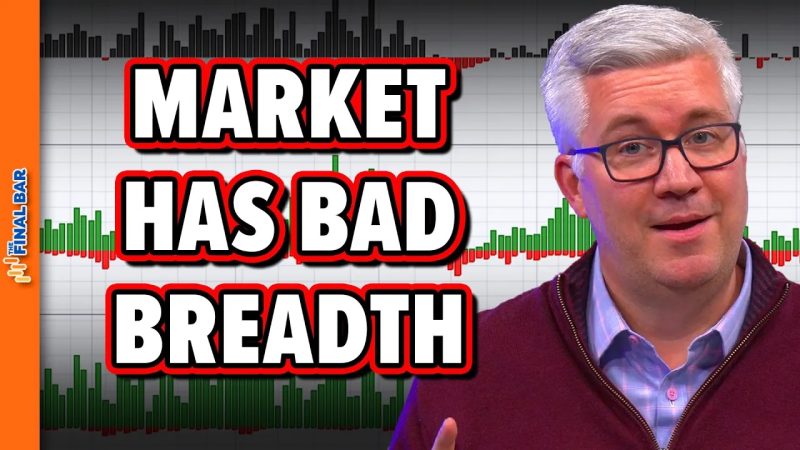Market breadth refers to the measure of the number of individual stocks participating in a market movement, typically within an index. Investors often track market breadth to gauge the overall health of the stock market. Poor market breadth occurs when a small number of stocks are driving the market rally, while the majority of stocks are lagging behind. This phenomenon raises concerns among investors about the sustainability of the market’s upward trend.
Understanding market breadth is crucial for investors as it provides valuable insights into market sentiment and potential risks. In a healthy market, a broad participation of stocks in a rally indicates underlying strength and stability. However, poor market breadth points to a narrow leadership, where only a select few stocks are driving the market higher, potentially masking weaknesses in the broader market.
One key implication of poor market breadth is the lack of confirmation in the market rally. When only a limited number of stocks are propelling the market upwards, it raises doubts about the sustainability of the trend. Market breadth acts as a validation mechanism for the strength of a market trend – without broad participation from a diverse range of stocks, the rally may lack the necessary foundation to sustain itself.
Moreover, poor market breadth can be a warning sign of underlying weaknesses in the market. It suggests that investor participation is concentrated in a handful of stocks, which could be driven by speculation rather than fundamental strength. In such scenarios, a market correction or reversal becomes more likely as investors realize the unsustainable nature of the rally driven by a few select stocks.
Investors should be cautious when poor market breadth persists over an extended period. While short-term fluctuations in market breadth are common, prolonged divergence between a few leaders and the broader market can indicate systemic issues. It is essential for investors to conduct thorough research and analysis to understand the underlying factors driving the market and to differentiate between sustainable trends and short-term anomalies.
In conclusion, poor market breadth should be a cause for concern among investors as it can signal fragility in the market rally. Investors need to monitor market breadth indicators regularly to assess the breadth of market participation and the underlying strength of the market trend. By staying informed and alert to changes in market breadth, investors can better navigate market fluctuations and make informed investment decisions. Remember, a healthy market is characterized by broad participation, so watch out for signs of poor market breadth as a potential warning signal for market instability.
